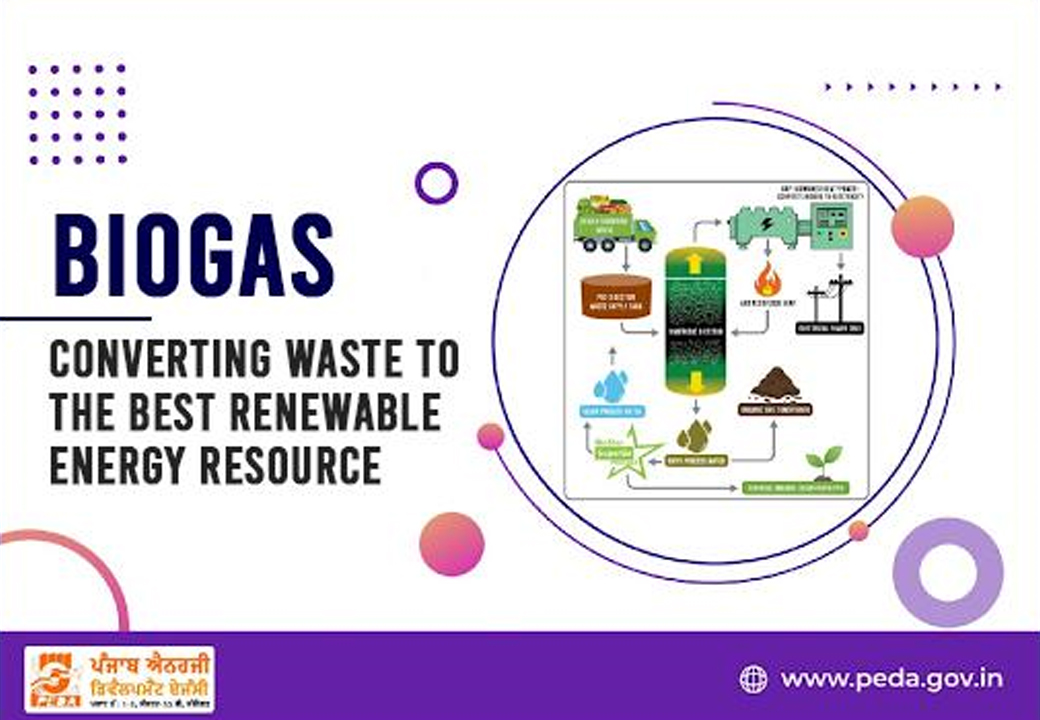Biogas: Converting Waste to the Best Renewable Energy Resource

Generally, the social-economic growth and well-being of any country are evaluated by the factors of adequate power generation, effective distribution, and efficient usage. The study further explains why developing countries are facing an energy availability dilemma which is probably due to lack of funds, low generation capacity, lack of leadership availability, old and poor investment policies, and lack of innovative ideas. These factors have however created a gap between the demands and supply of energy and hence resulting in a poor standard of living for the citizens. Hence for developing countries, it's extremely imperative to invest in alternative sources of energy. One such hero who has emerged as a hero in the realms of alternative sources of energy is organic waste. Through recent studies, it has been found that organic waste can be an efficient buddy for sustainable energy sources. It has got immense potential to maintain green renewable energy.
Organic waste as our savior
Yes! Organic waste is the new trending renewable energy resource. Organic waste streams are produced by the waste in the beverage and food industry, paper industry, agriculture, and households. Further, the management of solid waste and valorization disintegrates the waste in MSW׳s composition and physicochemical characteristics. The result comes out that organic matter represents 59% of waste, followed by paper–cardboard 12%, plastic 8%, miscellaneous 8%, metals 7%, glass 4%, and wood 2%. This organic waste brings out the added advantage of the reduction in the annual emission of a greenhouse, saving cost on energy fuel purchased by individuals and also increases the energy efficiency.
Organic waste in its original form is not of any use, but it comes into utilization when the waste is fermented. This fermentation is also known as anaerobic digestion of organic waste stands out to be one of the most sustainable technologies for the provision of green energy.
Production of Biogas
Biogas is a renewable energy source generated from the decomposition of organic waste. This decomposition takes place through a process called fermentation or anaerobic digestion. The organic waste which is being fermented comes from the waste produced by farms, restaurants, and others. The waste is then directed to covered pools where its decomposition results in the release of biogas. The leftover part known as the bio-digestate is further used as a fertilizer. The biogas can further help to generate electric power, thermal energy, or as a fuel for transportation however leaving a positive impact on the environment. The process also further reduces the greenhouse gas emissions into the air and also decreases the amount of nitrogen or phosphorus pollution in streams, rivers, and soil that are near the farms.
Current trends of organic waste as energy sources
Through recent reports, it has been found that the world is using only a fraction of the potential to produce gas from organic waste covering only 20% of today's demand for gas. However modern societies and economies are surging their amount of organic waste from agriculture wastes, food waste, and animal manure to produce more biomethane and biogas, clean energy sources with added advantages of sustainable development. Biogas offers a local source of power and heat for communities nearby and leads to a clean cooking fuel for household usage. Up-gradation to biomethane will get all the energy system benefits of natural gas without the associated net emissions. The government is also in the continuous push of producing biogas and biomethane giving necessary momentum to the benefits across energy, transport, agriculture, and the environment through various campaigns and advertisements. Through elaborated study and IEA reports it has been concluded that the availability of sustainable feedstocks for organic waste is set to grow by 40% by 2040.
In addition to the existing benefits biogas and biomethane also offer a way that brings rural communities and industries into the transformation of the energy sector.
PEDA Establishes Waste To Energy Projects Under Waste To Energy Programme
To mitigate the problem of stubble burning, PEDA is putting in full efforts to utilize the paddy straw in the Compressed Biogas (CBG) Projects, Biomass Power Projects & Bio-ethanol Projects based on paddy straw.
The Ministry of New & Renewable Energy (MNRE), Govt. of India, is providing Central Financial Assistance under the Waste to Energy Programme for Waste to Energy Projects. As per Notification dated 30th July 2018 by MNRE, GOI, it is presently Rs. 4 crores per 12000 cum raw biogas per day capacity plant subject to a maximum of Rs. 10 crore per project.
Govt. of India, Ministry of Petroleum & Natural Gas has also notified the National Policy on Biofuels in June 2018 which emphasises the need for promotion and development of projects for the production of biofuels.
Oil Companies like IOCL, BPCL and HPCL under the Ministry of Petroleum and Natural Gases are facilitating the marketing of Compressed Biogas (CBG) conforming to IS 16087:2016 specifications of BIS and providing a rate of Rs. 48.30 per kg (including 5% GST) under their Programme of SATAT (Sustainable Alternative towards Affordable Transportation).
PEDA has allotted 23 Compressed Biogas (CBG) Projects based on paddy straw, having a total capacity of 262.58-ton CBG per day, to Private Developers on Build, Operate & Own (BOO) basis under NRSE Policy-2021. Among these, the Haibowal Biomethanation Project by PEDA is Asia's first 1 MW High Rate organic production plant where CNG & approximately 6300 MW electricity is successfully being produced with the help of cattle dung.When commissioned, these projects will consume about 8.77 lac ton paddy straw per annum.
Also, out of the above projects, 1 largest project with a total capacity of 33.23-ton CBG per day is set up by M/s. Verbio India Private Limited, Chandigarh, at village: Bhuttal Kalan, Tehsil: Lehragaga, Distt: Sangrur, on a BOO basis, is at an advanced stage of completion. The commercial production of CBG will be started by December 2021.

